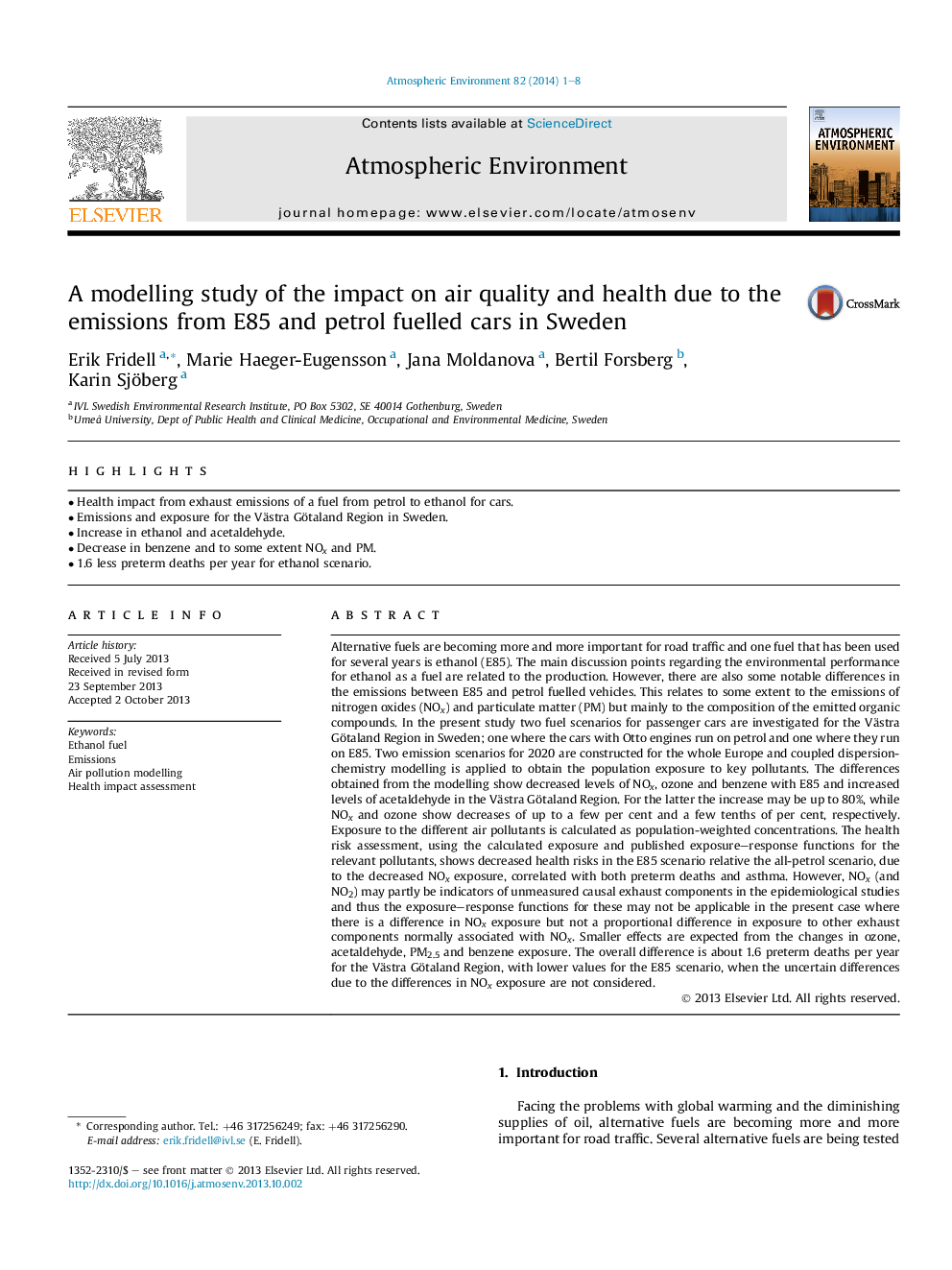| Article ID | Journal | Published Year | Pages | File Type |
|---|---|---|---|---|
| 6340022 | Atmospheric Environment | 2014 | 8 Pages |
Abstract
Alternative fuels are becoming more and more important for road traffic and one fuel that has been used for several years is ethanol (E85). The main discussion points regarding the environmental performance for ethanol as a fuel are related to the production. However, there are also some notable differences in the emissions between E85 and petrol fuelled vehicles. This relates to some extent to the emissions of nitrogen oxides (NOx) and particulate matter (PM) but mainly to the composition of the emitted organic compounds. In the present study two fuel scenarios for passenger cars are investigated for the Västra Götaland Region in Sweden; one where the cars with Otto engines run on petrol and one where they run on E85. Two emission scenarios for 2020 are constructed for the whole Europe and coupled dispersion-chemistry modelling is applied to obtain the population exposure to key pollutants. The differences obtained from the modelling show decreased levels of NOx, ozone and benzene with E85 and increased levels of acetaldehyde in the Västra Götaland Region. For the latter the increase may be up to 80%, while NOx and ozone show decreases of up to a few per cent and a few tenths of per cent, respectively. Exposure to the different air pollutants is calculated as population-weighted concentrations. The health risk assessment, using the calculated exposure and published exposure-response functions for the relevant pollutants, shows decreased health risks in the E85 scenario relative the all-petrol scenario, due to the decreased NOx exposure, correlated with both preterm deaths and asthma. However, NOx (and NO2) may partly be indicators of unmeasured causal exhaust components in the epidemiological studies and thus the exposure-response functions for these may not be applicable in the present case where there is a difference in NOx exposure but not a proportional difference in exposure to other exhaust components normally associated with NOx. Smaller effects are expected from the changes in ozone, acetaldehyde, PM2.5 and benzene exposure. The overall difference is about 1.6 preterm deaths per year for the Västra Götaland Region, with lower values for the E85 scenario, when the uncertain differences due to the differences in NOx exposure are not considered.
Related Topics
Physical Sciences and Engineering
Earth and Planetary Sciences
Atmospheric Science
Authors
Erik Fridell, Marie Haeger-Eugensson, Jana Moldanova, Bertil Forsberg, Karin Sjöberg,
